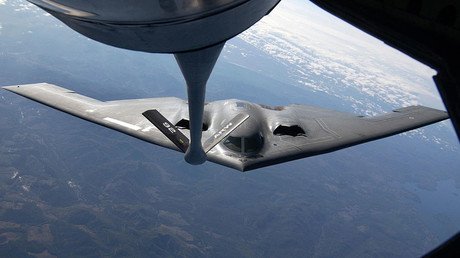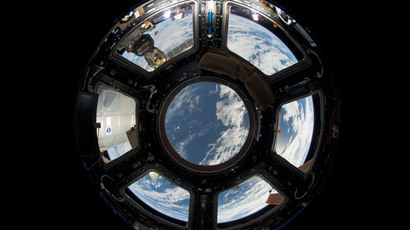Fearing ‘Space Pearl Harbor’: US could miss out on chance to ban weapons in space
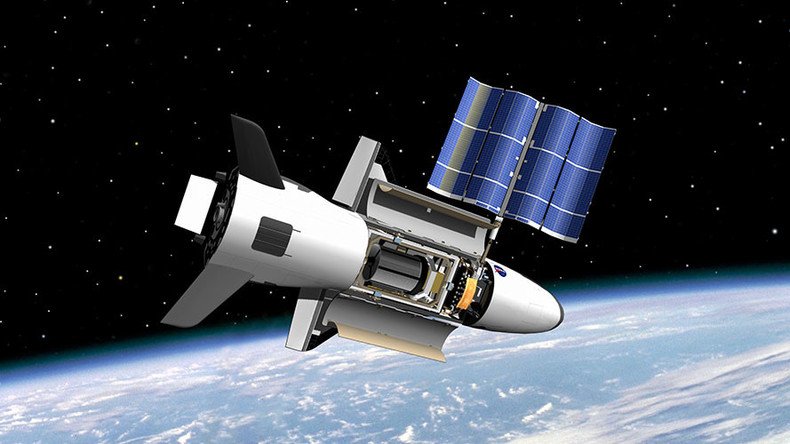
Russia and China have updated a draft treaty for the upcoming UN General Assembly, which seeks to ban deployment of weapons in space. The US is skeptical of such initiatives and prefers to develop new assets like the X-37B space plane.
The draft treaty was first presented in 2008 and updated for the second time for the session. Russia and China want to ban deployment of conventional weapons in space and prohibit the use of force and the threat of use of force against spacecraft.
The initiative is favored by an overwhelming majority of UN members, as evidenced by previous votes at the UN General Assembly. But the most advanced space nation – the US – has been opposing it, despite a long-standing concern in the US that another nation may attack its satellites to cripple America economically and militarily.
The US pursues a ‘wait and see’ policy, neither rushing to weaponize space nor missing a chance to develop new technologies which could be used for space warfare. For example, just last week it launched the Boeing X-37B – a drone spacecraft with potential for space warfare – on its fifth mission.
RT looks back at the military aspects of the space race history.
No nukes in space
Exploiting space for military purposes was the primary driver for both the US and USSR in the early days of the space race. The same rockets that placed satellites in orbit doubled as vehicles to deliver nuclear payloads across continents. And remote sensing from space, both to monitor movement of enemy troops and to detect missile launches, was the goal for satellites themselves.
In the 1960s, the two superpowers moved to limit the military use of space by grounding weapons of mass destruction. The 1963 Limited Test Ban Treaty prohibited nuclear explosions in space, thus placing restraints on the development of anti-satellite nuclear weapons.

These weapons had great potential, as evidenced by the devastating effects of the Starfish Prime EMP test on low earth satellites a year earlier. In 1967, the Outer Space Treaty banned all WMDs from space, but stopped short of limiting deployment of conventional weapons.
Some exploration in that direction was made during the Cold War. The Soviet Salyut-3 mission in 1974 included a test of an experimental gun which could fire in a vacuum. The stated purpose of the weapon was self-defense – to counter a hypothetical theft of a satellite by a space shuttle, which was in development at the time.
A more significant example was the Soviet IS (Istrebitel Sputnikov, or ‘satellite destroyer’) program, which went into service in 1978 and remained so through the 1980s. An IS was an automated satellite with about 30kg of explosives on board, which could maneuver its orbit to close in on its target and explode in a burst of shrapnel to destroy it. The USSR even produced armored target satellites to test the system.
Those early steps in the militarization of space, and its limitation, were taken with one major consideration in mind – neither side tried to compromise the balance of nuclear deterrence. Placing a nuclear device on a satellite would give the other side too little time to react to an attack, prompting it to prepare for a first strike. The same would be true for anti-satellite technology targeting the opponent’s missile launch detection system – which relies on higher-orbit satellites that are harder to kill than the low-orbit craft.
Paper shield for space
The effort to maintain this balance has kept space relatively peaceful, and was formalized in several arms limitation treaties. The development of IS system, for example, was halted by the SALT I treaty of 1972, which among other things prohibited space tests necessary to upgrade the satellite-killers.
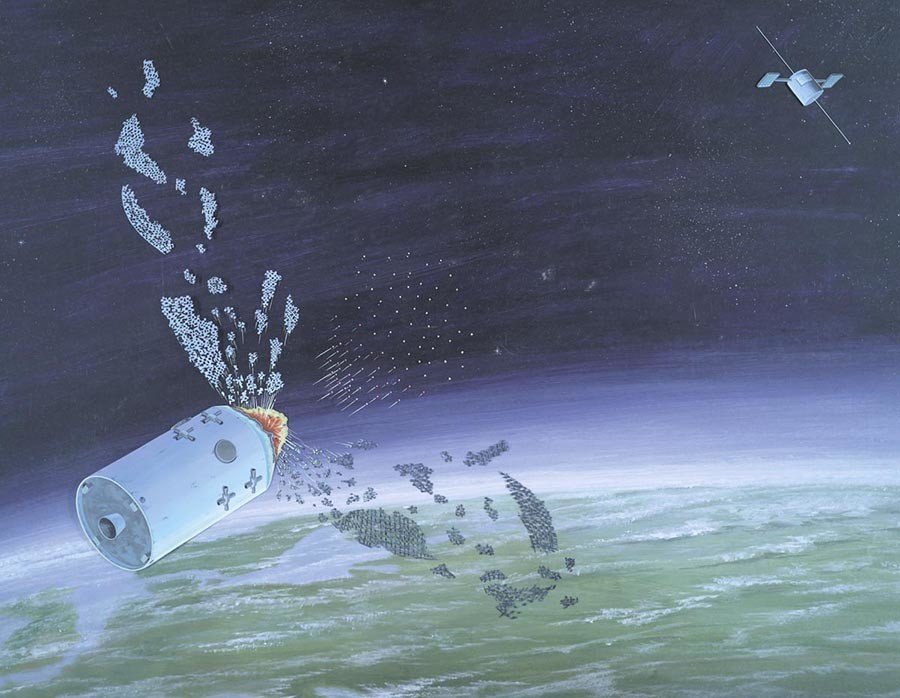
The 1979 SALT II forced the retirement of the R-36orb, a Soviet nuclear-capable missile, which achieved a global strike range by delivering its warhead into low earth orbit (hence the ‘orb’ part of its name) and using its engines to re-enter the atmosphere over the target. The theory was that by having the capability to attack the US from the south, the USSR would drive up the cost of missile defense for the US. The weapon circumvented the Outer Space Treaty because the warhead would not complete a full orbit and so, technically, was not considered space-based.
The Soviet Union had 18 R-36orbs deployed in silos and the weapon arguably outlived its purpose, since the Anti-Ballistic Missile Treaty of 1972 banned both countries from developing national ABM systems. The treaty also prohibited the development and deployment of their space components, further preserving the weapon-free state of space. That agreement is no longer in effect. The George W. Bush administration chose to withdraw from it in 2001, much to the consternation of Russia, which sees this as one of many American moves compromising Russian national security.
Space Pearl Harbor
The cancelation of the ABM Treaty was part of America’s larger pursuit of unilateral actions in global affairs. The policy affected the militarization of space as well. In 2001, a commission chaired by Donald Rumsfeld, already slated to become head of the Pentagon under the Bush administration, warned that America may suffer a “space Pearl Harbor” – an enemy attack on American satellites that would greatly diminish its military capabilities on Earth.
“The US is more dependent on space than any other nation. Yet the threat to the US and its allies in and from space does not command the attention it merits,”warned the commission. “Those hostile to the US can acquire on the global market the means to deny, disrupt or destroy US space systems by attacking satellites in space, communication links to and from the ground or ground stations that command the satellites and process their data.”
The commission recommended a technological and intelligence push to protect US space assets from potential attacks. The policy update released in 2006 stressed security issues, rejected any arms control treaties limiting US actions in space, and set as a goal for US diplomacy to convince other nations that they should support this policy.
The Obama administration revision of 2010 overturned this in favor of multilateral cooperation in space, but did nothing in terms of commitment to keeping space demilitarized. This reluctance was maintained in votes on arms control resolutions at the UN General Assembly, during which the US remained one of the few to abstain. Washington insisted it would rather follow a non-binding code of conduct in space.
The Trump administration has so far done little to update space policy, with the president’s interest in it seemingly limited to how urine is reprocessed on the International Space Station. But with the White House’s current focus on increased military spending and the free reign the Pentagon receives in its own affairs, it’s highly unlikely that Washington would agree to not deploy weapons in space.
China, Russia target US satellites
The ‘space Pearl Harbor’ rationale is well founded. The US military relies on spacecraft for navigation, communications, reconnaissance, targeting, and weather forecasts. But space-based assets are expensive, hard to defend, and slow to replace. A flare-up in some region where the US has a vested interest like the South China Sea or the Baltic could conceivably prompt America’s opponents to try to downgrade its military strength by targeting the space component.
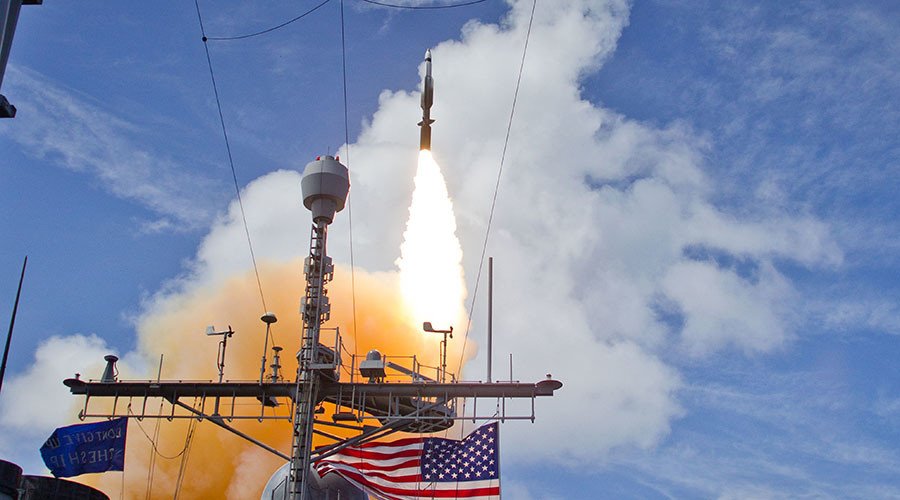
China famously shot down one of its own old weather satellites in 2007, triggering outcry across the Pacific and a similar test by the Pentagon the following year, which used an SM-3 missile, the basic component of the AEGIS anti-missile system, to destroy malfunctioning radar imaging satellites. Beijing does not publicly acknowledge further development of counter-satellite technologies, but the Pentagon believes it is rapidly advancing in that area.
A less-convincing case is last year’s launch of the Chinese Aolong-1, or ‘roaming dragon,’ which is meant for using its robotic arm to remove large pieces of space debris. The Hong Kong-based South China Morning Post argued that it could be used to attack satellites, though some experts question why the PLA would need such a capability when it could use more direct methods instead.
Russia does not advertise its anti-satellite capabilities, but some of its systems cause concern in the West too. Some of its military satellite launches in 2013 and 2014 may have been tests of direct impact approach. And the Nudol interceptor missile, which is currently in development in Russia, is expected to be able to take out satellites in low Earth orbit.
Look who’s talking
The reluctance of the US to bind itself to multilateral international treaties is well-known. For instance, it signed the UN Convention on the Law of the Sea in 1982, but has failed to ratify it – with critics saying that doing so would undermine America’s sovereignty. A more extreme example is the 1989 Convention on the Rights of the Child, which was ratified by all nations of the world, except the US.
Avoiding an agreement which would limit its freedom of military maneuvering in space is arguably a rational choice for the world’s most-capable space-faring nation. But it can be argued that countries like China and Russia, which, much like the US, are increasingly relying on their own space assets in both economic and military aspects, are being pushed into developing space deterrence by the US.
America’s capability to destroy other nations’ satellites is evident, and Russia did not hesitate to criticize the 2008 SM-3 test as an example of the US upsetting the strategic balance of power. Washington’s push to preserve space supremacy can hardly be doubted. The Boeing X-37B space plane, an unmanned spacecraft that looks like a scaled-down version of the Space Shuttle and is touted as a lab for future space technologies, was launched earlier last week. There is wide speculation that the spacecraft will be used to test technologies for space warfare – from rapid replacement of small satellites to taking out enemy satellites to serving as a space bombardment platform.
While that seems unlikely, military planners in Moscow and Beijing must be watching such developments closely. After all, their job is to prepare for any contingency, including a scenario in which the US resorts to a pre-emptive strike in space – a solution some analysts recommend for the ‘space Pearl Harbor’ dilemma.
Treaty in peril
Moscow made a public commitment to not be the first to deploy space weapons back in 2004, and suggested a binding international treaty, together with China, to the UN Disarmament Commission in 2008. In 2014, an updated version of the draft was presented. But the proposed treaty requires consent of all permanent members of the UN Security Council, so with the US abstaining in General Assembly votes and criticizing various documents aimed at keeping weapons out of space, a breakthrough is unlikely anytime soon.
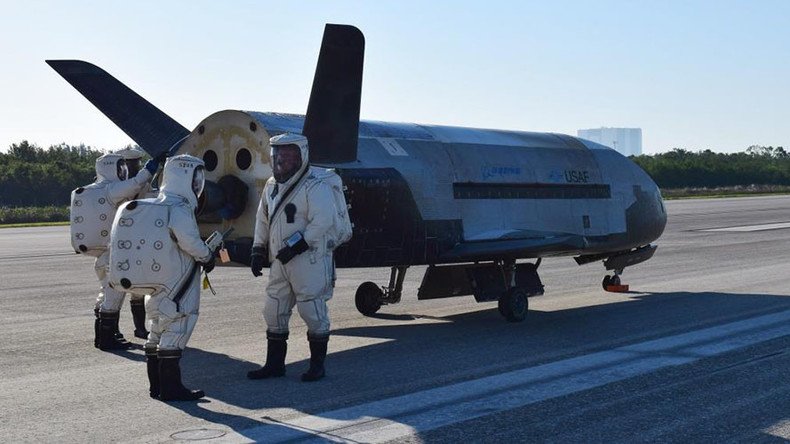
Hope for the future came in 2012, when the US agreed to work on a code of conduct in space, but Russia believes that Washington actually undermined the work. For instance, the wording suggested by the US would technically allow any object in orbit to be arbitrarily designated as ‘space junk’ and removed with impunity, according to the Russian Foreign Ministry.
Moscow says that the majority of nations working on the code sided with Russia and China, as evidenced by a 2015 multilateral meeting hosted by the EU. Washington has been stalling the process since then, while the EU “refrains from designating any prospects for the progress,” Moscow says.
US officials say the Russian-Chinese initiatives put forward at the UN may just be a guise for developing space weapons.
Despite a Cold War-era record of improving America’s security through arms reduction treaties with the USSR, including those covering space, the present-day US would rather seek protection through a unilateral show of force.
But when other nations act accordingly, Washington tends to accuse them of provocation and aggression. The US probably should rethink its attitude and acknowledge that security through deterrence, which requires a degree of vulnerability, may be better in the long term than having the biggest stick in the yard.
